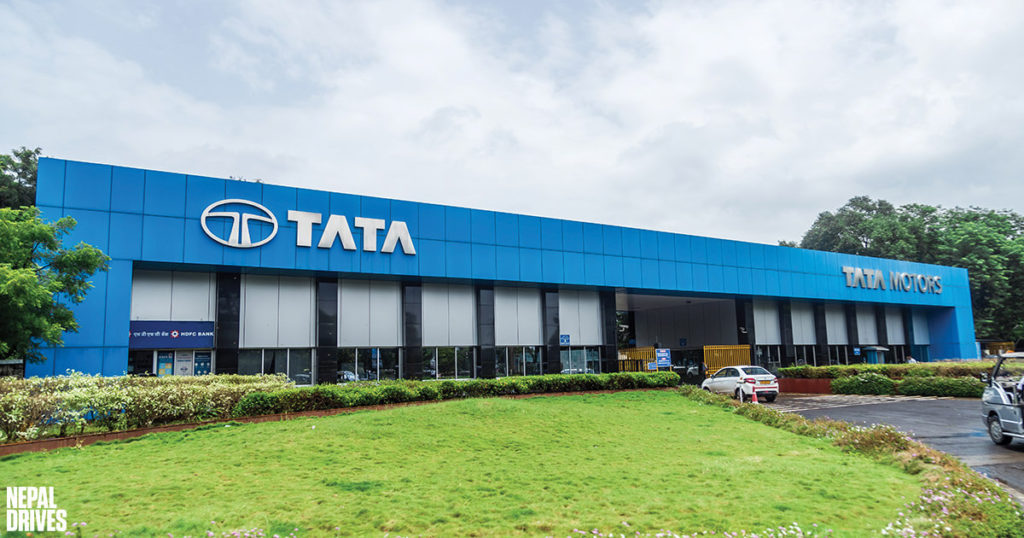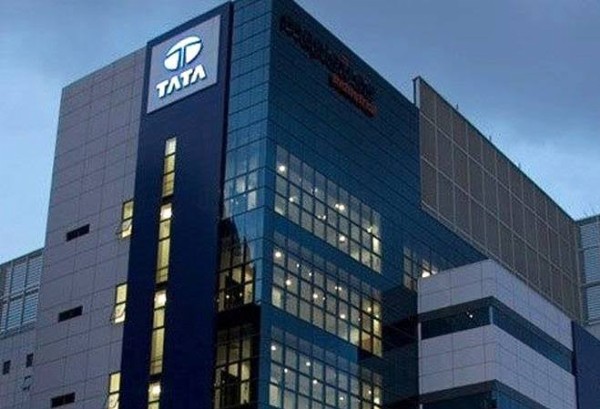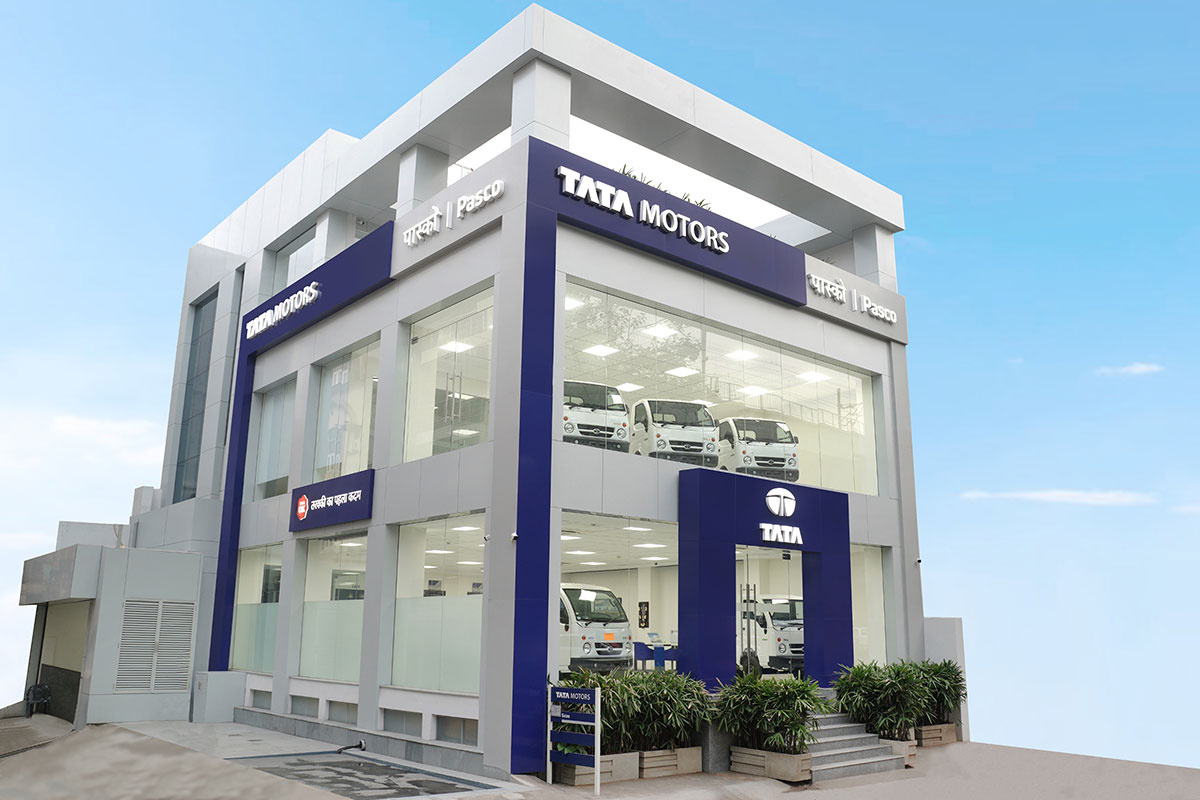Introduction
Rising among India’s most well-known automakers, Tata Motors is a division of the worldwide behemoth Tata Group. Celebrated for its creative approach, the corporation has entered several markets including passenger cars, luxury cars, commercial vehicles, and electric vehicles (EVs). This thorough study will walk you through Tata Motors’ journey, corporate structure, products, past stock performance, and variables influencing its shares—both favorably and unfavorably.

Tata Motors’ Genesis
Start of Tata Motors
Originally going under Tata Engineering and Locomotive Co., Tata Motors Established in 1945, LTD. (TELCO) At first, the company concentrated on producing other engineering goods including locomotives. It broadened its offering over time, drawing on the automotive sector, which resulted in commercial trucks and passenger cars.
Global Presence of Tata Motors
Tata Motors runs production facilities all across several continents and presently counts more than 175 countries worldwide. Following its acquisition of Jaguar Land Rover (JLR) in 2008, which let the business enter the luxury vehicle market and increase its worldwide presence, its international exposure rose noticeably.
Product Lineup: Various Vehicle Range
Passenger vehicles
Compact cars, sedans, SUVs, and luxury vehicles comprise Tata Motors’ passenger vehicle line. Affordable, performance-oriented, and innovative features of models like the Tata Nexon, Tiago, and Harrier have made them household names in India Safety, fuel economy, and contemporary tech integration drive Tata Motors’ design philosophy.
Commercial Vehicles
One of the main strengths of the company is its line of commercial vehicles. Under different sub-brands like Tata Daewoo and Tata Marcopolo, Tata Motors produces construction vehicles, buses, and trucks. India’s transportation and logistics system depends on these trucks absolutely.
Electric Vehicles (EVs)
Tata Motors has achieved notable progress in the market for electric cars in accordance with world patterns. Launched in 2020, the Tata Nexon EV signalled the company’s arrival into the EV market. Emphasizing both passenger and commercial electric vehicles, the company intends to greatly increase its range of EV products in the next years.
Jaguar Land Rover (JLR)
Originally acquired by Tata Motors in 2008, Jaguar Land Rover has greatly expanded the range of luxury cars offered by the business. Especially in regions like the UK, the US, and China, JLR’s brand awareness has greatly boosted to Tata Motors’ worldwide sales.

Financial Situation and Corporate Strategy
Profit Development and Revenue
Driven mostly by Jaguar Land Rover’s performance and the need for commercial vehicles in India, Tata Motors has faced erratic revenues. Though it faces difficulties in international markets, the corporation has shown remarkable increase in its home market.
Financial Optimization and Operational Effectiveness
Tata Motors has always concentrated on cost control and operational efficiency to keep competitive. The business has started projects to update its factories, simplify supply networks, and cut waste all around.
Funding for Sustainability and Innovation
Particularly in the spheres of electric mobility, autonomous driving technologies, and sustainable manufacturing, Tata Motors is heavily funding R&D. These expenditures are meant to help the business keep ahead of industry trends and produce automobiles suited for the future.
Market Tata Motors: Stock Performance
Tata Motors Share Price Background
Tata Motors’ stock performance has shown noteworthy swings over the years, usually mirroring its financial situation and state of the market. Affected by domestic sales, overseas performance (especially Jaguar Land Rover), and more general macroeconomic issues, Tata Motors’ stock price has been erratic.
For instance, Tata Motors’s share price suffered during the 2008 global financial crisis but subsequently recovered once it acquired Jaguar Land Rover. The COVID-19 epidemic also produced disruptions that resulted in declining stock prices; yet, the growing demand for electric cars has driven consistent recovery.
Recent Tata Motors Stock Trends
Recent years have seen notable increase in Tata Motors’ shares thanks to elements including:
- the launch of the Tata Nexon EV, which raised market sales of electric cars.
- faster Jaguar Land Rover performance.
- The company’s strong post-pandemic comeback.
But the stock has also suffered, especially in response to global supply chain interruptions, chip shortages, and raw material price increases influencing manufacturing schedules.
Important Factors Influencing Stock Prices
Global Market Situation:
The stock market as well as the automobile sector are affected by economic elements such inflation, interest rates, and oil costs.
Electric Vehicle (EV) Revolution:
Although Tata Motors’s calculated entry into the EV industry has improved stock performance, it nevertheless faces fierce competition from both established automakers and EV startups.
Jaguar Land Rover: Performance
The main factor influencing Tata Motors’ stock price is JLR’s share of the general profits of the company. Tata Motors’ stock might be affected by variations in the luxury vehicle market or by changes in the world economy.
Dynamics of Indian Markets:
Being the biggest market of the company, changes in the Indian government policies, consumer behavior, and economy affect Tata Motors’ stock.
Prices for raw materials:
Like other manufacturers, Tata Motors’ profitability depends much on the cost of raw materials like steel and aluminum, which shapes its stock.

Stock analysis: rise and fall explained
The Stock Rising of Tata Motors
Several important events help to explain the rise in Tata Motors’ stock:
Purchasing Jaguar Land Rover:
Buying JLR brought Tata Motors to the international scene and gave it a luxury brand known all around. This increased investor confidence, which raised stock values.
Pay attention to electric cars:
Particularly in India, the explosion of demand for electric cars has helped Tata Motors. Models like the Nexon EV have given investors hope about the company’s future expansion in the electric market.
Strong Indian Sales:
Tata Motors’s market share has increased steadily as India’s automotive industry develops, therefore strengthening its financial situation and stock performance.
The Stock Fall of Tata Motors
Tata Motors has had difficulties notwithstanding its achievements that have caused stock prices to decline. These include:
Global Economic Downturns:
Global economic slowdowns, such as the 2008 financial crisis, led to a drop in consumer demand, notably for luxury vehicles. Tata Motors’ stock price suffered since JLR is a significant component of its portfolio.
Pandemic Influence:
The COVID-19 epidemic seriously threw off manufacturing processes and world supply systems. This resulted in reduced sales, chip shortages, and production pauses that harmed Tata Motors’ stock performance.
Rising input expenses:
Rising raw material costs—especially for electronics and steel—have squeezed profit margins and raised questions about future earnings.

Main Forces behind Tata Motors’ Success
Vehicle Technology Innovation
From safety elements to infotainment systems, Tata Motors has made significant investments in new technologies to guarantee that its cars remain competitive in the market. Aiming to profit on the growing demand for environmentally friendly and sustainable transportation, the company’s push towards electric cars (EVs) is among the most important developments in its recent past.
Electric cars (EVs):
Launched in 2020, the Tata Nexon EV is among the first electric SUVs available in India to strike a mix between price and performance. With intentions to introduce more models in the near future, the company is increasing the production of EVs.
Connected car technologies:
Leading the way in adding linked technologies into its cars so that drivers may control several features using mobile apps is Tata Motors. This improves user experience and helps the business to project a current, technologically advanced brand.
Autonomous driving:
Tata Motors, albeit in the early phases, has been researching autonomous driving and is expected to include such technologies into next models.
Pay close attention to sustainability.
One of Tata Motors’ fundamental cornerstones is now sustainability. Its corporate plan and the goods it produces both mirror this.
Manufacturing technique:
By using renewable energy sources and besting energy consumption, Tata Motors has promised to lower the carbon footprint of its manufacturing sites.
Environmental Vehicle Solutions:
The company’s shift toward hybrid and electric cars is a direct response to calls for reduced emissions and ecologically friendly transportation worldwide. Tata Motors wants to establish an ecosystem for green vehicles comprising passenger cars, trucks, and electric buses.
Strategic alliances and partnerships
Tata Motors has developed various strategic agreements to boost its worldwide reach, improve technology, and bolster its R&D activities.
Jaguar Land Rover (JLR):
For Tata Motors, getting JLR changed everything. Apart from high-margin items, the British luxury manufacturer enhanced Tata Motors’ global profile particularly in Europe and the United States.
Relationship with Tata Power:
Complementing its emphasis on electric vehicles, Tata Motors has teamed with Tata Power to create EV charging stations all throughout India. The expansion of the electric car market depends on this cooperation since one of the primary obstacles to EV acceptance is still easily available charging stations.
Global Supplier Network:
To guarantee the required components for vehicle manufacture, Tata Motors also developed ties with important worldwide suppliers. This has helped the business to satisfy demand, boost output, and raise product quality.
Challenges and Risks Tata Motors Face
Reliance on Jaguar Land Rover
Although acquiring Jaguar Land Rover has greatly helped Tata Motors become profitable, it also has hazards. Any downturn in the luxury car market—especially in areas like Europe and North America—may have a big impact on Tata Motors’ financial situation. The economic crisis and the subsequent worldwide chip shortage have affected luxury car sales, therefore influencing Tata’s bottom line.
Strong rivalry in the EV market
With established companies like Hyundai, Mahindra, and even newcomer Tesla joining the Indian market, the market for electric vehicles is growingly competitive. Though with an early mover advantage with the Nexon EV, Tata Motors faces pressure to continuously innovate and provide more competitive goods at appealing costs.
Supply Chain Interventions
Like most manufacturers, Tata Motors is sensitive to supply chain interruptions, especially for semiconductors. Delays in car manufacture and delivery brought on by the continuous worldwide semiconductor shortage have resulted in missed revenue targets and unhappy consumers.
Policies and Government Rules
The highly regulated automobile sector means that changes in government regulations including tax rates, emission requirements, import/export taxes will directly affect Tata Motors’ activities. Stricter emission standards or changes to the Goods and Services Tax (GST) system, for instance, can either limit product offers or raise expenses.
Variations in Global Economic Conditions
Operating in several worldwide markets, Tata Motors is sensitive to changes in exchange rates, recessionary slowdowns, and geopolitical concerns. For Tata Motors, for instance, the US-China trade war and Brexit have left uncertainties especially for its Jaguar Land Rover division, which deals with tariff problems in several areas.
The Changing Automotive Scene of India: Tata Motors
Contribution to the Indian GDP
One of the biggest automakers in India, Tata Motors greatly boosts the nation’s GDP. Over its dealerships, research and development facilities, and manufacturing sites, the company has generated thousands of employment. It also is quite important for the evolution of the Indian automotive supply chain.
Reasonable Transportation
For millions of Indians, Tata Motors has made reasonably priced mobility possible. Particularly in the entry-level and mid-range categories, its array of vehicles has let a sizable fraction of the population own cars. Models such as the Tata Nano (now discontinued) sought to be the “people’s car,” so highlighting Tata’s dedication to provide reasonably priced transportation.
Infrastructure Development
The existence of Tata Motors’ production sites has helped industrial infrastructure grow all around India. Among other locations, its Pune, Jamshedpur, Lucknow plants have drawn suppliers and auxiliary businesses, hence strengthening local economies.
Environmental Leadership
Driving sustainability inside the Indian automobile business is something Tata Motors is quite engaged in. The corporation is pushing the change from conventional internal combustion engine vehicles to greener substitutes with an increasing array of electric and hybrid automobiles. The government’s push towards EV adoption is expected to benefit Tata Motors as the company expands its electric offerings.
Tata Motors’ Future Prospects
Expansion into Global EV Market
Tata Motors is positioning itself to capitalize on the growing global demand for electric vehicles. The business has revealed ambitions to grow its EV line significantly, with new models set for launch in the coming years. Tata’s success in India’s expanding EV industry puts them as a potential global player in this field, with development plans into Europe and other regions.
Technological Advancements
The future of Tata Motors hinges in continued investment in technology. From driverless automobiles to smart production processes, Tata Motors is committed to embracing cutting-edge solutions to stay ahead of its competitors.
Diversification and New Segments
Tata Motors is actively researching new categories, including electric buses and heavy-duty electric vehicles. As urbanization grows and sustainable mobility becomes more important, Tata wants to leave its mark in these developing nations.
Strategic Alliances and Consolidations
To guarantee it can satisfy the needs of the automotive market of tomorrow, Tata Motors is probably going to keep developing strategic relationships with tech businesses, automotive suppliers, and even rival automakers. Potential mergers or acquisitions could further boost its position in the worldwide market.
Conclusion
Tata Motors has come a long way from its humble origins as a locomotive maker to being a global powerhouse in the automotive sector. The company’s diversified portfolio, covering commercial vehicles, passenger automobiles, and electric vehicles, positions it well to succeed in an increasingly competitive and eco-conscious automotive market.
While obstacles like global supply chain disruptions and tough competition exist, Tata Motors’ focus on innovation, sustainability, and key relationships provides a strong basis for ongoing success. The company’s success on the stock market reflects the broader automotive trends, with both ups and downs driven by domestic and international variables.
Tata Motors is positioned to lead in the EV market as society moves toward electric mobility. For this legendary company, which keeps innovating, adjusting, and expanding in an always shifting worldwide market, the future seems bright.
FAQs
Q.1. Which are Tata Motors’ primary products?
Ans:- Passenger cars, SUVs, electric vehicles (EVs), and commercial vehicles including trucks and buses are among the range of vehicles Tata Motors makes.
Q.2.Recent stock performance of Tata Motors
Ans:- Particularly with the success of the Nexon EV and the comeback of Jaguar Land Rover, Tata Motors’ stock has enjoyed moments of increase. Global supply chain problems and economic considerations have, nevertheless, also presented difficulties.
Q.3. In the market for electric cars, what direction will Tata Motors find?
Ans:- Aiming to become a leader in the electric mobility industry, Tata Motors is significantly investing in the market and intends to increase its range of electric vehicles in the next years.
Q.4. How might Tata Motors boost India’s economy?
Ans:- Major participant in India’s automotive market, Tata Motors helps to create jobs, boost industry, and expand infrastructure. It also significantly helps to make reasonably priced cars widely available.
Q.5. What difficulties does Tata Motors have entering the worldwide market?
Ans:- Tata Motors must contend with fierce competition in the market for electric vehicles, changes in world economy, and reliance on the performance of Jaguar Land Rover in overseas markets.



